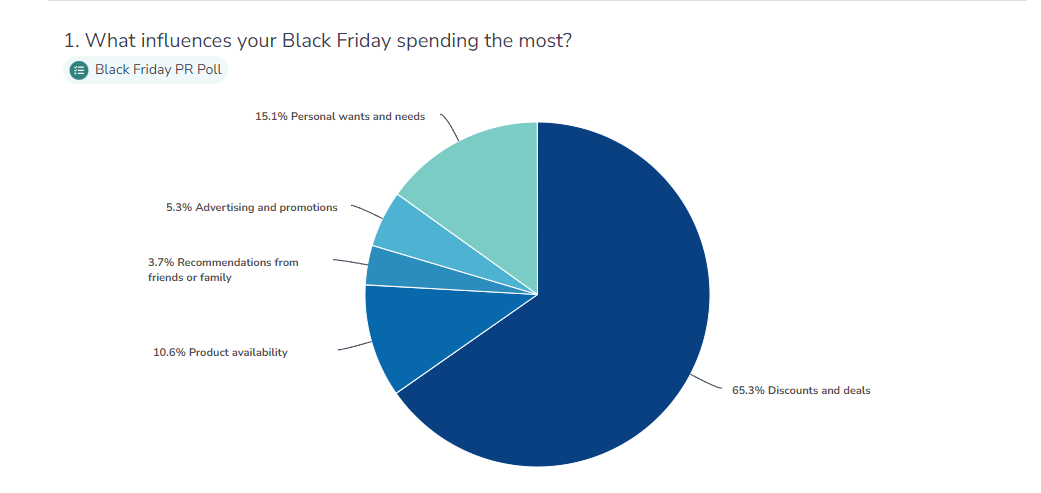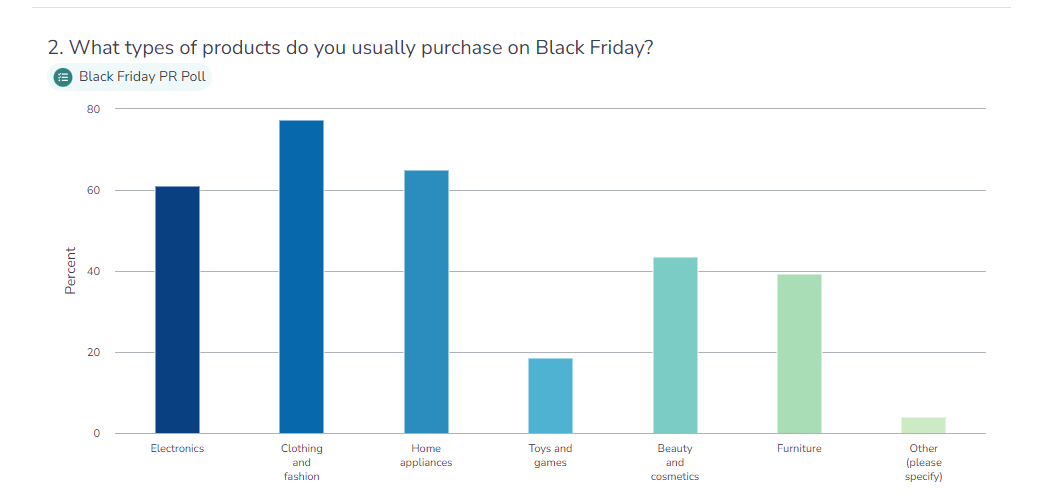Black Friday is more than just a weekend sales event — it’s a global phenomenon that has profoundly influenced consumers and retailers alike. Its adoption in South Africa is no different, dramatically impacting consumer purchasing behaviour in the country, turning November into a month of preparations and heavy spending for many South African households. In this blog, we’ll discuss what influences people’s buying decisions and what they usually buy on Black Friday. We’ll also look into how brands can leverage these consumer insights to make the most of this big day.
Consumer Spending on Black Friday
We conducted a survey on the YourView panel to uncover what drives spending habits during Black Friday. The responses shed light on the key influences affecting shopping decisions and the popular product choices on this massive sales day. Let’s delve into the insights gathered from our survey participants.
What influences your Black Friday spending the most?
- Discounts Matter: Most respondents said that discounts and deals were their top influence during Black Friday, especially those 25 and older.
- Gender Impact: Across genders, more males across all age groups expressed that family and friends’ recommendations significantly influenced their Black Friday spending decisions.
- Different Influences: Regardless of age, women tend to be more swayed by product availability and their own wants and needs in comparison to men. Moreover, advertising and promotions were viewed as the primary motivator for Black Friday spending exclusively among women aged 22 and above.
What types of products do you usually purchase on Black Friday?
- What Women Prefer: Women tend to purchase more furniture and beauty & cosmetic products compared to men across all age groups.
- Clothing and Fashion: Additionally, clothing and fashion emerged as the most chosen option among respondents for Black Friday purchases.
- Home Appliances and Electronics: Following clothing and fashion, home appliances were the second most chosen category, while electronics stood as the third most selected option for Black Friday purchases.
- Other Items: Some respondents selected “other” for Black Friday purchases, including food, groceries, alcohol, and Christmas gifts among their choices.
Understanding these demographic and preference dynamics can offer valuable insights into the varied influences and purchasing patterns during the Black Friday shopping frenzy.
Black Friday in Post-COVID South Africa
The global pandemic’s unique challenges have significantly reshaped Black Friday’s shopping practices. According to a recent Bizcommunity report, shoppers are becoming increasingly cost-conscious due to dwindling income levels and rising living costs. The surge in economic hardship has led consumers to strategically delay larger purchases until significant sale events like Black Friday.
Alongside increased inflation and rising fuel and electricity costs, consumers have begun to prioritise essential needs over luxuries, frequently shopping at discount stores. Retailers have to adapt to these new realities, shifting their strategies to continuously offer discounts throughout the year rather than focusing solely on Black Friday. Innovations like the Buy-Now-Pay-Later (BNPL) model are also gaining popularity as a way to alleviate immediate financial pressures on consumers.
How Brands can Leverage This Data
As economic pressures shape consumer behaviour, Black Friday patterns are evolving significantly. Customers are becoming more discerning, seeking genuine value and transparent practices from businesses. This shift demands a strategic approach from companies. Miguel Da Silva’s insights provide a crucial playbook for businesses navigating these changes. His advice, grounded in prudent strategies, emphasises the importance of renegotiating deals with suppliers to secure better prices. Moreover, Da Silva advocates for a thoughtful approach to Black November sales, steering clear of artificial price inflation followed by hefty discounts. Instead, he advocates for businesses to explore value additions like complimentary shipping or bundled offerings. In essence, Da Silva’s guidance underscores the importance of authenticity and customer-centricity in a landscape shaped by economic challenges.
Conclusion
To sum up, Black Friday has indeed transformed from being a yearly sales event to a critical determinant of consumer behaviour. It has shaped a unique consumer climate in South Africa, challenging brands to be strategic and dynamic in offering both economic and quality value. The needs of consumers evolve and amplify come Black Friday, making it imperative for brands to position themselves as credible, innovative, and adaptive market players in this competitive landscape.





